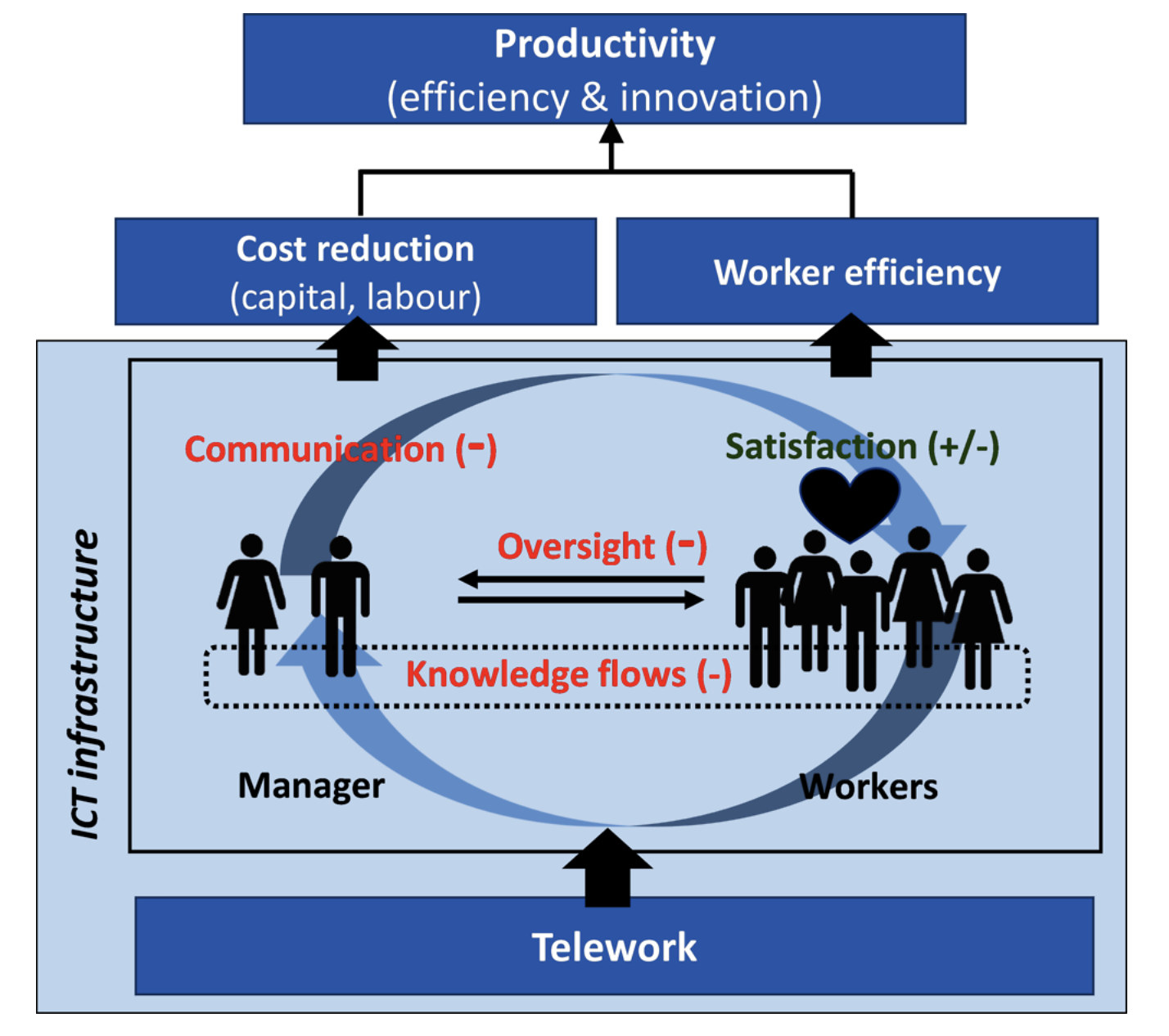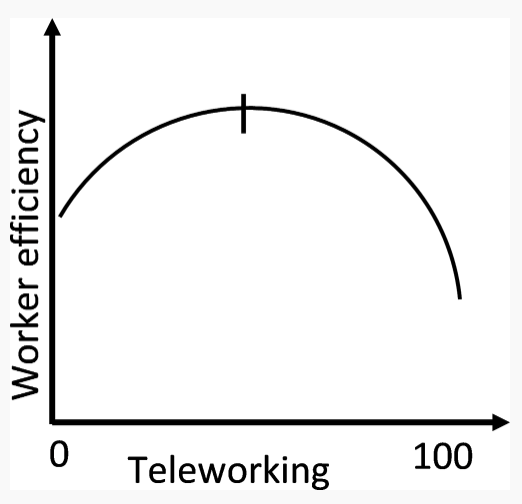4 Factors that Will Make or Break Your Remote Work Productivity, According to a Major Report
In July, the Organization for Economic Co-Operation and Development (OECD) published a policy brief with some tremendous evidence-based information on potential productivity gains from teleworking in the post-COVID-19 era.
TL;DR Worker efficiency improves with low levels of telework but decreases with ‘excessive telework’, implying a ‘sweet spot’ where worker efficiency – and thus productivity – is maximized at intermediate levels of telework.
First, four key themes from the piece — supported by data and evidence — are:
- Remote work may be a permanent fixture after COVID-19.
- Remote work varies substantially across countries, sectors, occupations and firms.
- In the long run, remote work has the potential to improve productivity and worker well-being but carries some ambiguity and risk in its overall impact.
- To minimize risk of harming long-term innovation and worker well-being, remote work should be a choice and not “overdone”.
We wanted to take a moment to give you an abbreviated synopsis of some of the more interesting, actionable findings.
Remote Work Affects Productivity in These 2 Main Channels
Perhaps one of the most compelling sections of the report, it lays out the two main factors that shape the impact of telework on firms and staff.
Telework can improve or hamper firm performance, with its overall effect depending importantly on two main channels:
- A direct channel affects firm performance through changing the efficiency, motivation, and knowledge creation of the workforce.
- An indirect channel is for telework to facilitate cost reductions that free up resources for productivity enhancing innovation and reorganization.
The path to productivity gains is laid out in this model:

Will Remote Work Improve or Harm Your Firm? These are the 4 Determining Factors
According to the model above, there are four main factors that will determine whether remote work will help or hurt your firm’s productivity:
1 | Worker Satisfaction
This one can break two different ways. “Telework can improve firm performance by raising worker satisfaction and thus worker efficiency, e.g. through better work-life balance, less commuting or fewer distractions leading to more focused work or less absenteeism. It is, however, also possible that worker satisfaction decreases with telework, e.g. due to solitude, hidden overtime and a fusing of private and work life, or an inappropriate working environment at home.”
Thus, it is important to give workers the choice to work remotely and offer a flexible work environment where employees can choose what’s best for themselves.
2 | Cost Reductions
Telework can also improve firm performance through facilitating cost reductions. A few ways this happens:
- Lower capital costs by reducing office space and equipment required by the company
- Labor costs can be reduced as telework enlarges the pool of workers firms can choose from
- Hiring costs may decrease if higher worker satisfaction reduces voluntary quits and turnover
- Potentially attract workers at lower wages than would otherwise be the case – in particular if combined with other measures that improve work-life-balance such as flexible hours – to the extent workers are willing to give up a higher salary in return for these amenities
3 | Communication
The report points out that the reduction in in-person interactions — and communication quality, in general — can hamper productivity. “A wide range of evidence supports the notion that personal meetings allow for more effective communication than more remote forms such as emails, chat, or phone calls. For instance, personal communication has been shown to be more convincing, to attract more attention, or to better allow observing social clues. Disruptive forms of communication may surge to compensate for the lack of personal communication, e.g. increased email traffic or virtual meetings.”
As we’ve mentioned in previous articles, though, by incorporating communication tools like Slack, Microsoft Teams and others, firms need to beware of shoddy implementations which ignore ramifications for information security and governance.
4 | Knowledge Flows
This factor is near and dear to us here at M-Files. The lack of personal interaction can decrease knowledge flows among employees. At M-Files, a few cornerstones of our information management solution are:
- The ability to share information easily with colleagues
- Improving the discoverability of critical, helpful information
- The flow of information between individuals, departments, business units and external parties
Workers learn from in-person encounters with colleagues — water cooler chats, dropping by a teammate’s office — and that interaction cannot be understated. The report says: “Innovation depends importantly on the sharing of knowledge: ‘What each individual knows is less important. What counts is collective knowledge.’”
To compensate in a remote work environment, firms should realign their digitization efforts to promote knowledge sharing in the absence of interpersonal engagement. And to that end, information management tools like M-Files are absolutely critical to ensure a healthy knowledge flow.
In Remote Work Environments, there is a Point of Diminishing Returns
 The report goes on to explain that there is indeed a point of diminishing returns with teleworking. In summary, worker satisfaction increases in a remote work environment — enough to offset potentially negative effects on communication, knowledge flows and managerial oversight.
The report goes on to explain that there is indeed a point of diminishing returns with teleworking. In summary, worker satisfaction increases in a remote work environment — enough to offset potentially negative effects on communication, knowledge flows and managerial oversight.
“The relative strength of these channels in turn is likely to depend on the intensity of telework: the negative effect due to the lack of personal interactions likely becomes stronger with telework intensity, as opportunities for in-person communication diminish, while worker satisfaction improves with low levels of telework but may suffer from ‘excessive’ teleworking, e.g. due to solitude or a fusing of private and professional life.”
Thus, there is a sweet spot for maximizing productivity. Not offering remote work is bad. Too much remote work is bad, also.
Ultimately, firms must ascertain for themselves where that point of diminishing returns is and aim to create a more flexible workplace where employees have the option to choose whichever volume of remote work suits them best.
And to maintain productivity, they need to be equipped with digital solutions like communication, collaboration and information management — at the very minimum.
